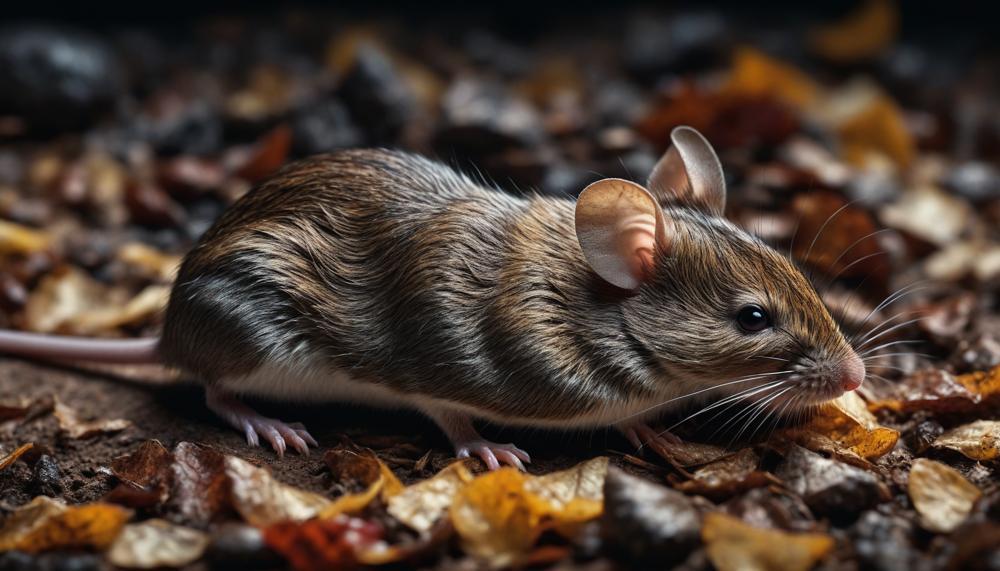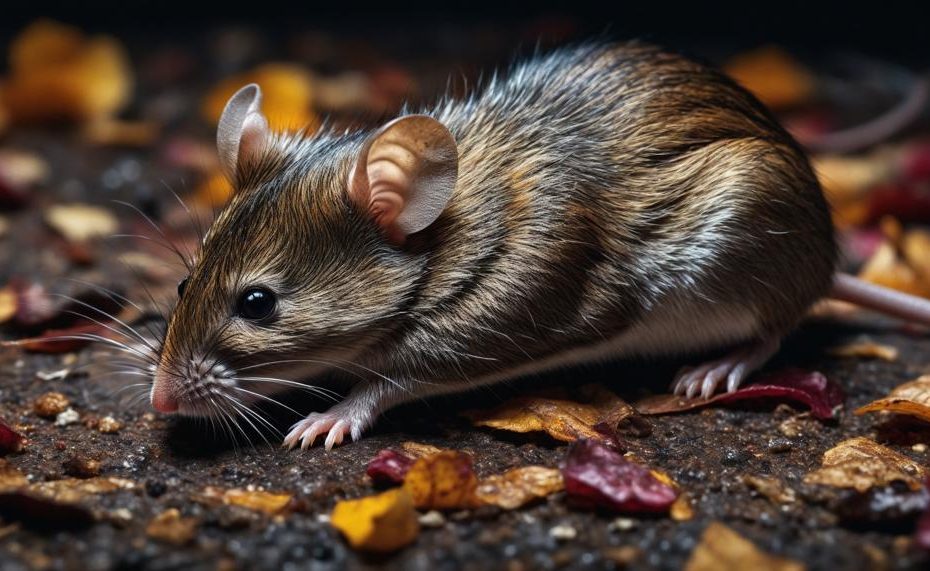Discovering a dead mouse in your home can be an unsettling experience, but knowing how to dispose of it safely is crucial for maintaining a healthy environment.
Proper disposal not only protects you from potential health risks but also ensures your home remains free from unpleasant odors and further pest issues.
Key Takeaways:
- Safety First: Wear gloves, masks, and long-sleeved clothing to avoid direct contact with the rodent.
- Double Bagging: Secure the mouse in double plastic bags or a disposable container.
- Thorough Cleaning: Disinfect the area and any tools used in the disposal process.
- Proper Disposal: Dispose of the bagged mouse in an outdoor garbage bin or bury it at least one foot deep away from your home and water sources.
- Professional Help: If handling the dead mouse feels uncomfortable, consider calling a professional.
By following these steps, you can handle the situation efficiently and reduce the risk of disease transmission. Let’s dive into the detailed process to ensure you’re well-prepared for this task.
Contents
Initial Precautions
Taking initial precautions when disposing of a dead mouse is crucial to ensure safety and prevent contamination. Here’s a detailed guide:
Step-by-Step Guide on How to Dispose of a Dead Mouse
Disposing of a dead mouse requires care to avoid health risks. Follow these steps meticulously:
| Step | Description | Details |
| 1 | Locate the Dead Mouse | Check traps or bait stations first. Mice may also die in hidden areas like behind furniture or appliances. |
| 2 | Wear Protective Gloves | Always use gloves to prevent direct contact with the mouse and potential exposure to diseases. Latex or rubber gloves are ideal. |
| 3 | Place Mouse in a Sealed Bag | Using a paper towel, pick up the mouse and place it in a plastic bag. Seal the bag securely to contain any contaminants. |
| 4 | Double-Bag the Mouse | For extra safety, place the sealed bag inside another plastic bag and seal it. This ensures no leakage and contains any odours. |
| 5 | Dispose of the Mouse | Dispose of the double-bagged mouse in an outdoor garbage bin, preferably in a bin with a lid to prevent scavengers from accessing it. |
| 6 | Clean and Disinfect the Area | Thoroughly clean the area where the mouse was found. Use a disinfectant and disposable rags or paper towels to wipe down surfaces. Avoid vacuuming as it can spread dust and pathogens. |
| 7 | Wash Hands Thoroughly | After removing gloves, wash your hands thoroughly with soap and water to ensure no lingering contaminants. |
| 8 | Prevent Future Infestations | Use rodent repellents like EarthKind’s botanical solutions to deter future infestations. Seal any entry points around your home to keep mice out. |
How to Dispose of a Dead Mouse in a Trap?
The best and most hygienic way to dispose of a dead mouse caught in a trap involves several careful steps:
| Step | Action | Details |
| Preparation | Wear protective gear | Gloves, mask, long-sleeved clothing |
| Disinfection | Spray area and mouse | Use disinfectant or bleach-water mixture |
| Removal | Pick up mouse | Use paper towels, plastic bags, tongs, or shovel |
| Containment | Bag the mouse | Place in a plastic bag |
| Double Bagging | Seal tightly | Use a second plastic bag |
| Disposal | Dispose properly | Outdoor garbage bin or deep burial |
| Cleaning | Disinfect tools | Clean tools, discard gloves and mask, wash hands |
| Precautions | Keep area safe | Avoid vacuuming, keep pets and children away |
How to Dispose of a Mouse Caught in a Glue Trap?
Disposing of a mouse caught in a glue trap requires careful handling to ensure safety and hygiene. Here are the proper steps:
| Step | Description | Notes |
| Safety Precautions | Wear disposable gloves and protective clothing | Minimizes exposure to pathogens |
| Euthanizing the Mouse | Use a humane method to end the mouse’s suffering | Alternatively, release it using vegetable oil |
| Disposal of the Mouse | Double-bag the mouse and trap, then dispose of in an outdoor bin | Prevents contamination and spread of diseases |
| Disinfecting the Area | Clean and disinfect the trap area thoroughly | Use a disinfectant to kill germs |
| Burying Option | Dig a small hole in the yard and cover the trap with dirt | Turns the mouse into fertilizer |
| Avoid Vacuuming | Never vacuum the mouse or trap | Prevents airborne spread of pathogens |
| Seek Professional Help | Contact pest control if uncomfortable with disposal | Professional services can handle it safely |
How to Dispose of a Live Mouse in a Trap?
When handling a live mouse caught in a trap, it is vital to ensure the process is humane and safe. Follow these steps:
| Step | Description | Notes |
| Wear Protective Gear | Use gloves to avoid contact with the mouse and any diseases it may carry. | Ensure gloves fit properly and cover your wrists. |
| Relocate the Mouse | Transport the trap at least a mile away from your home. | Avoid populated areas; choose a natural habitat. |
| Release the Mouse | Open the trap carefully and allow the mouse to exit. | Do not force the mouse out; be patient. |
| Clean the Trap | Disinfect the trap after use. | Use a suitable disinfectant to kill germs. |
| Disinfect the Area | Clean the location where the trap was set. | Use a bleach solution to sanitize effectively. |
Handling Dead Mice in Different Locations
Encountering a dead mouse can be alarming, but appropriate handling ensures safety and hygiene. Here’s how to handle dead mice in various settings:
Homes
In homes, it’s crucial to maintain cleanliness and prevent disease transmission:
- Wear Protective Gear: Use gloves, a mask, and long sleeves.
- Containment: Double-bag the mouse in plastic or use a disposable container.
- Disposal: Place the bag in an outdoor garbage bin or bury it deep in the yard, away from water sources.
- Disinfect: Clean the area with a bleach solution.
Outdoor Areas
Handling dead mice outdoors involves more robust tools and methods:
- Safety Measures: Wear gloves and use a shovel or long-handled tools.
- Containment: Place the mouse in a sealed bag or container.
- Disposal: Bury it deep or dispose of it in an outdoor garbage bin.
- Disinfect Tools: Clean the tools used with a bleach solution.
Commercial Buildings
In commercial settings, professional intervention is often recommended:
- Professional Help: Contact pest control services.
- Protective Measures: Ensure personnel wear protective gear.
- Containment and Disposal: Similar to home methods but follow stricter local regulations.
- Disinfect Thoroughly: Clean and disinfect the area to prevent contamination.

Myths and Misconceptions
There are several common misconceptions about disposing of a dead mouse that can lead to improper handling and potential health risks. Here are the most prevalent myths debunked:
| Myth | Reality | Explanation |
| Flushing Down the Toilet | Not Safe or Effective | Flushing a dead mouse can cause plumbing issues and does not ensure the safe containment of pathogens. It’s best to use proper disposal methods like double-bagging and placing it in an outdoor bin. |
| Throwing in Indoor Trash | Health Hazard | Disposing of a dead mouse in indoor garbage can spread diseases within the home. Always use an outdoor garbage bin to reduce the risk of contamination. |
| Handling Without Gloves | Unsafe | Direct contact with a dead mouse can expose you to harmful pathogens. Always use gloves, masks, and long-sleeved clothing when handling a dead mouse. |
| Using a Vacuum | Spreads Pathogens | Vacuuming a dead mouse can aerosolize pathogens, spreading them throughout your home. Manual removal with appropriate protective gear is essential. |
| Burying Close to Home | Improper Disposal | Burying a dead mouse close to your home or near water sources can lead to contamination. If burial is necessary, ensure it is far from the house and water to prevent environmental hazards. |
| No Need to Disinfect | Critical Step | After disposing of a dead mouse, disinfecting the area is crucial to eliminate any lingering pathogens. Use a strong disinfectant to clean the area thoroughly. |
Proper disposal of dead mice is essential for health and safety. Always follow recommended guidelines to avoid potential health risks.
Conclusion
Disposing of a dead mouse in your home can be a delicate process, but following the right steps ensures your safety and maintains a clean environment. The key steps involve protective measures, proper disposal, and thorough cleaning.
First, equip yourself with gloves, a mask, and long-sleeved clothing to avoid direct contact with the rodent. This is crucial to prevent exposure to potential diseases. Carefully place the mouse in a plastic bag using a paper towel or a tool, seal it tightly, and then place it in another bag for added security. Dispose of this in an outdoor garbage bin or bury it at least one foot deep, far from your home and water sources.
Next, clean and disinfect the area where the mouse was found. Use a disinfectant on all surfaces and tools used in the process. Avoid vacuuming, as this can spread harmful particles. After handling, thoroughly wash your hands with soap and water.
For those uncomfortable with handling dead rodents, professional pest control services are available.





